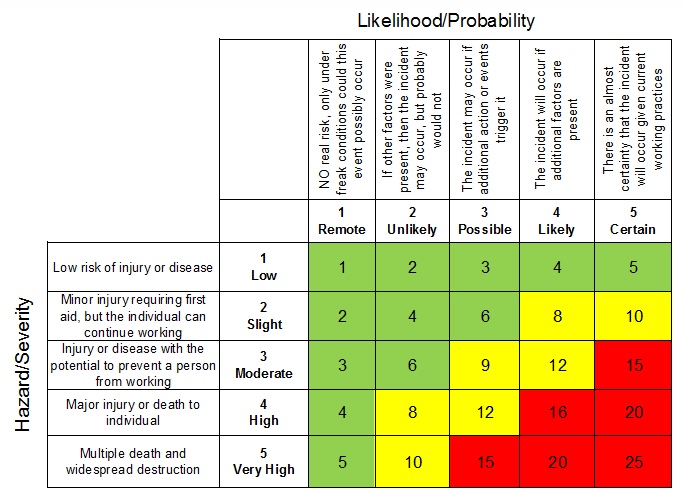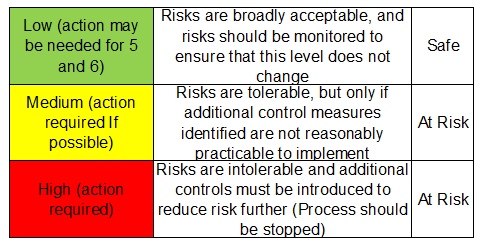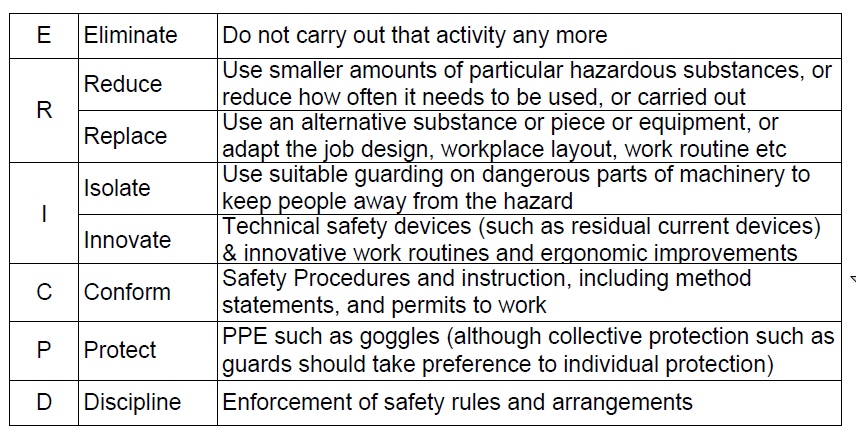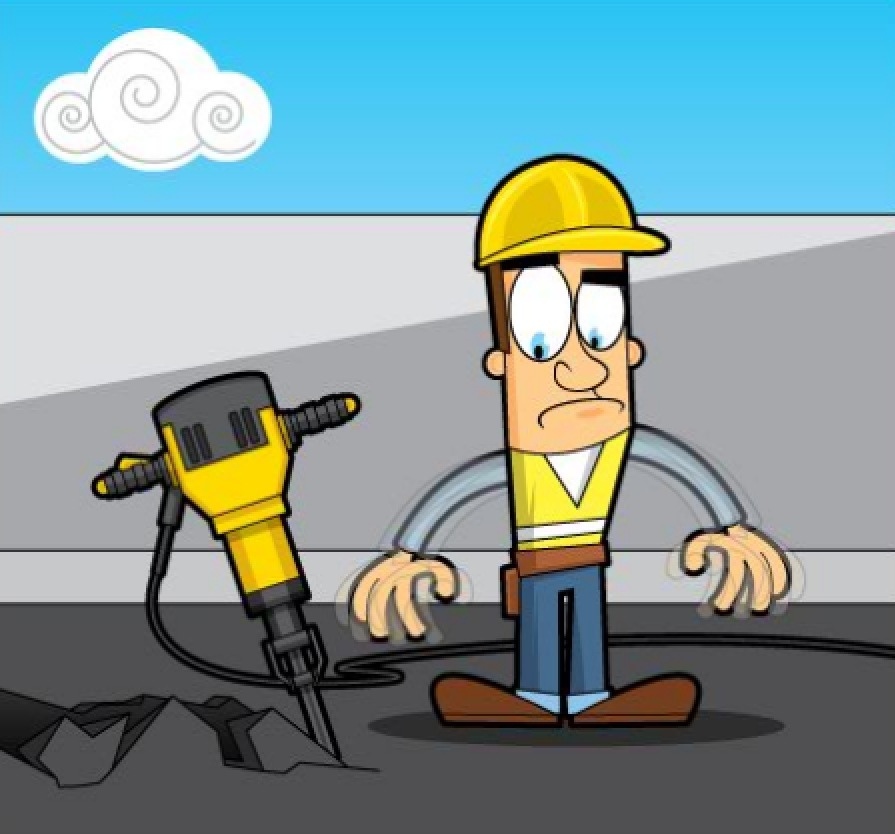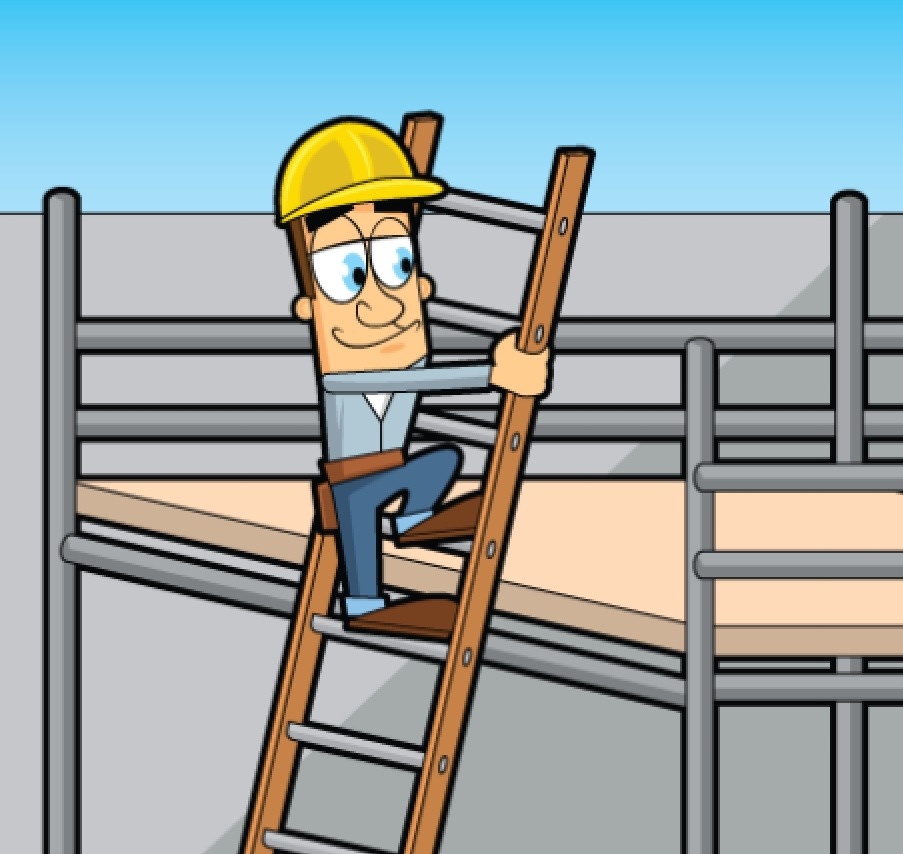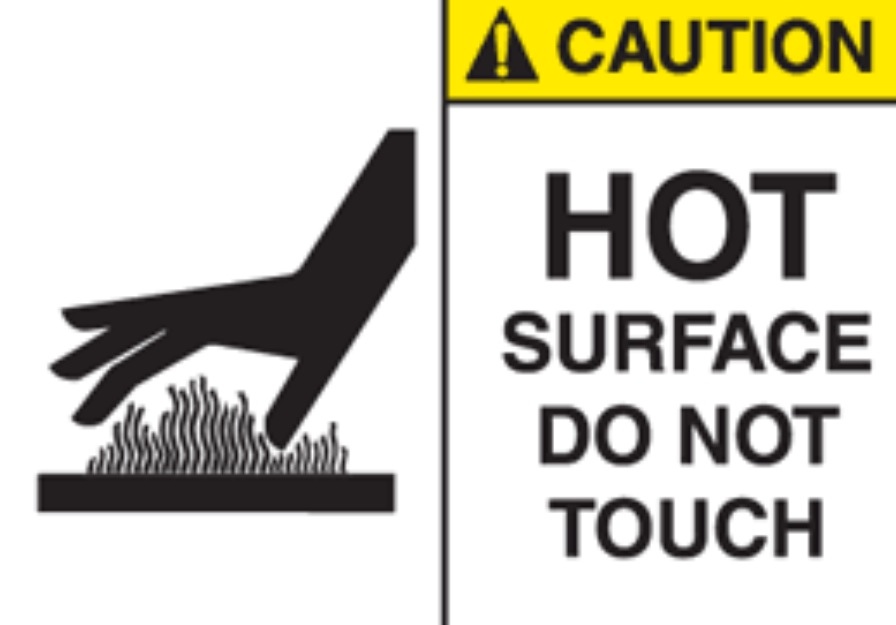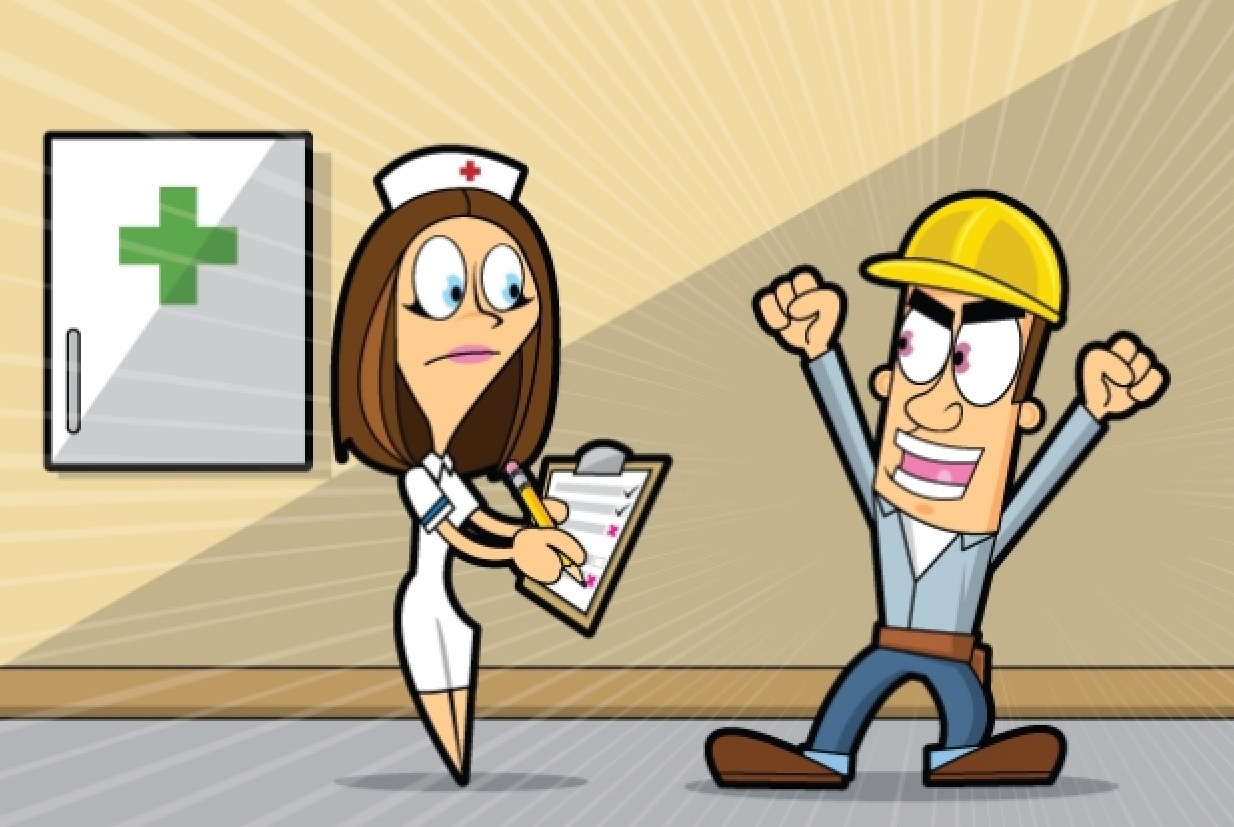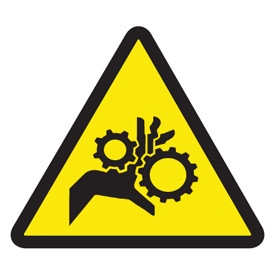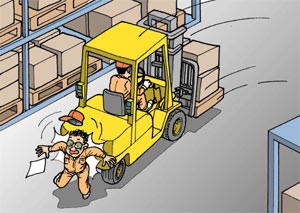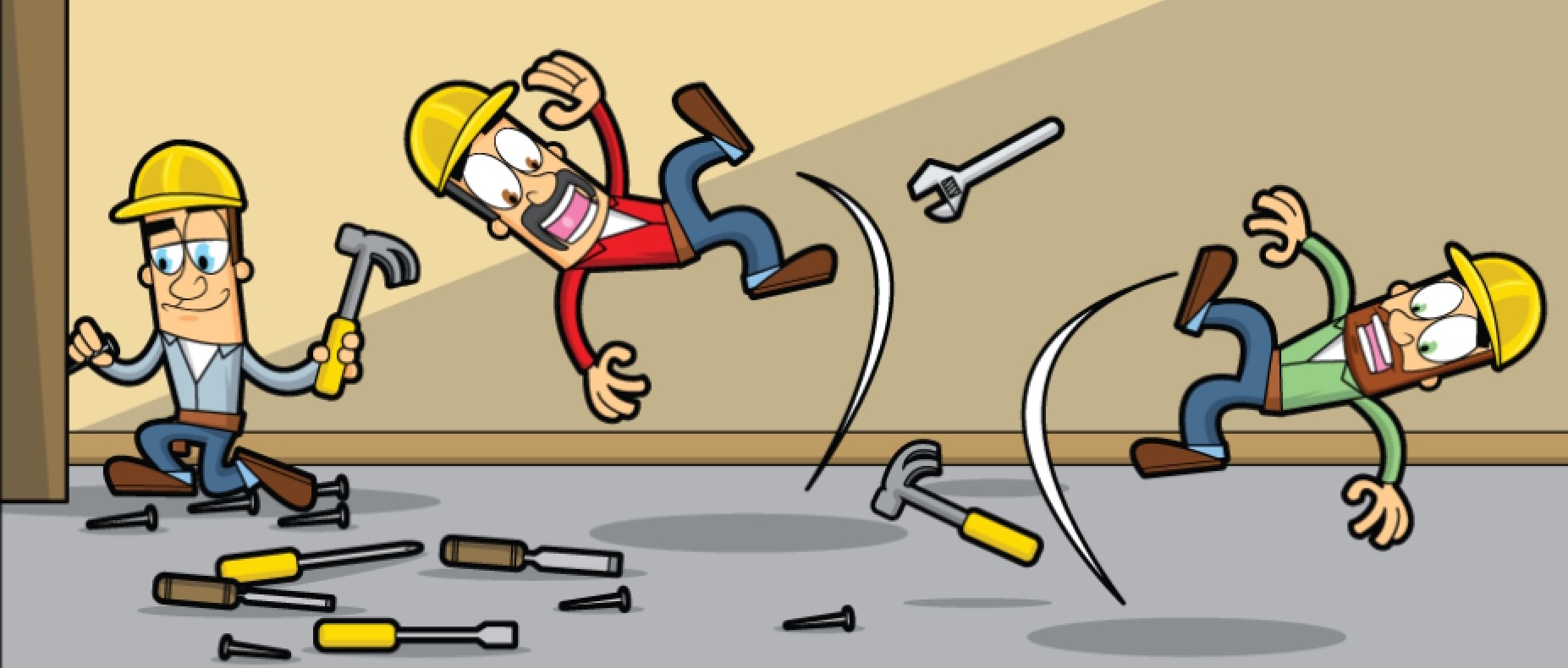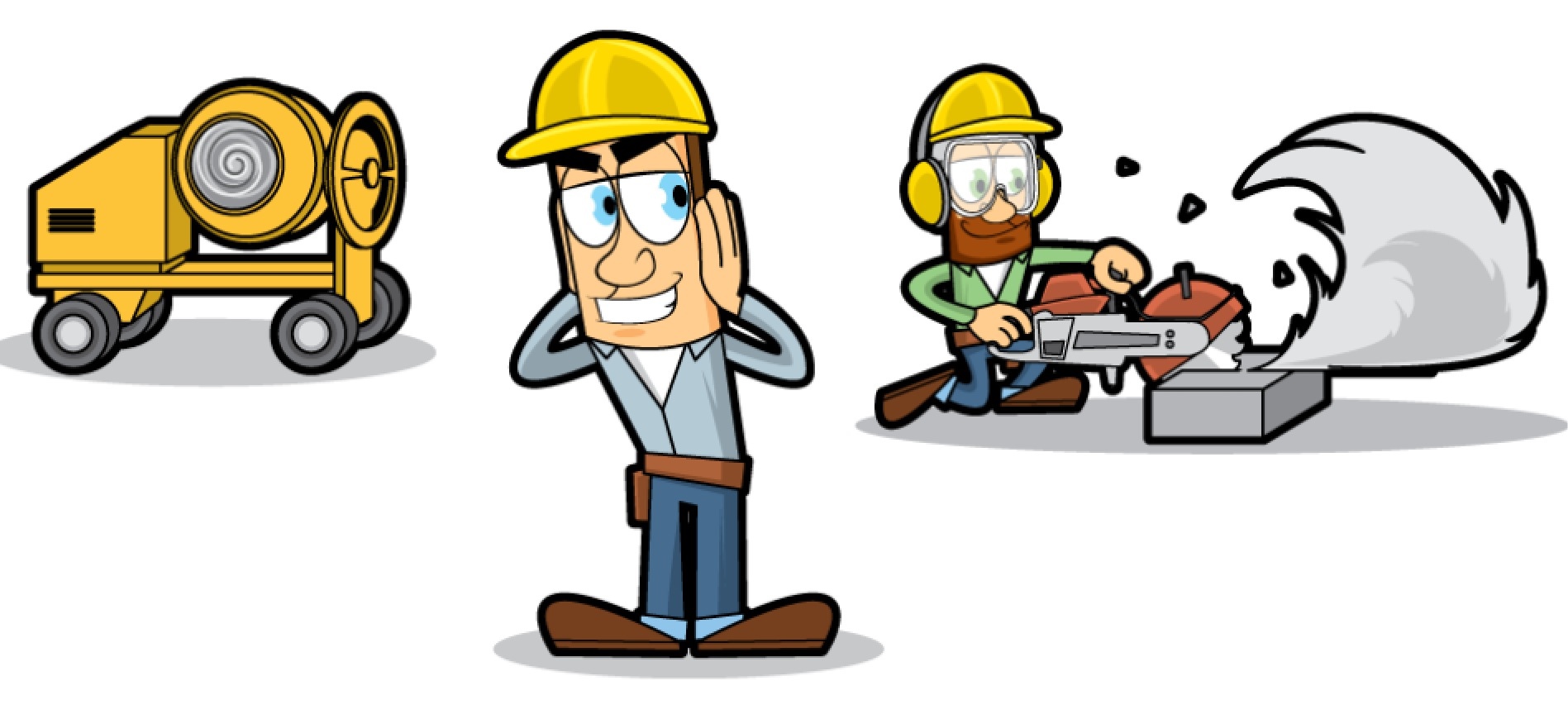Information
-
Assessment Number
-
Enter the Area, type of assessment.
-
Description of area/process being assessed
-
Site/Department
-
Conducted by:
-
Conducted on
General Help
-
Risk priority matrix:
If the hazard is present, answer "Yes" and if not present, answer "No"
Then rate the hazard once scored by considering the remaining risk exposure after the mitigating and controlling factors of the existing control measures are taken into account (residual risk).
If residual risk is less than 5 then you can select "safe" in the "rate the hazard" section (If the hazard is present, then you must select "Safe" or "At Risk" for each hazard category)
Take photographs or sketch to help clarify the hazard (or indeed the lack of hazard) as required in each section. -
Risk actions and category:
-
Ensure that the hierarchy of risk control is applied to actions:
The lower the number the more effective the action!
Equipment and Mechanical Hazards
1. Hazards relating to rotating parts of machinery (entanglement, friction burns, or being dragged into rotating parts of machinery)
-
Guidance:
Look for the possibility of being dragged into rotating parts of machinery by entanglement with loose clothing, long hair etc; for example conveyers, rotating chucks, or spindles.
Also look at grinders or sanders which could cause friction burns if contact is made.
Check also for exposed gears, such as rack and pinions, which could drag the operator into the area where the gears mesh. -
Pictorial guidance:
-
Are there hazards related to being drawn into the machine by moving or rotating parts?
-
Who might be harmed?
- Operator
- Technician
- Maintenance
- Visitor
- Driver
- Warehouse Operative
- Other
-
You selected other, please specify:
-
How might they be harmed?
-
What controls already exist?
-
What is the likelihood of harm?
-
What is the severity?
-
Total Score of likelihood x severity
- 1 - No Action is required
- 2 - No Action is required
- 3 - No action is required
- 4 - No action is required
- 5 - Action to improve should be considered
- 6 - Action to improve should be considered
- 8 - Action required if reasonably practicable
- 9 - Action required if reasonably practicable
- 10 - Action required if reasonably practicable
- 12 - Action required if reasonably practicable
- 15 - STOP PROCESS - Action required
- 16 - STOP PROCESS - Action required
- 20 - STOP PROCESS - Action required
- 25 - STOP PROCESS - Action required
-
Rate the Hazard (Comment mandatory for scores of 5 and above)
-
Action(s) required:
you must also identify who is responsible for the action(s)
Action(s)
-
Action
-
Responsibility:
2. Hazards relating to any hot parts of machinery or material
-
Guidance:
Is there a possibility of being burned from hot parts on the machine or hot parts made by the machine (for example machine barrels, nozzles, bag sealers, molten material etc)?
Include in this things like swarf from machining, purge from moulding machines etc -
Are there hazards related to being burnt by hot parts or hot areas of equipment being used
-
Who might be harmed?
- Operator
- Technician
- Maintenance
- Visitor
- Driver
- Warehouse Operative
- Other
-
You selected other, please specify:
-
How might they be harmed?
-
What controls already exist?
-
What is the likelihood of harm?
-
What is the severity?
-
Total Score of likelihood x severity
- 1 - No Action is required
- 2 - No Action is required
- 3 - No action is required
- 4 - No action is required
- 5 - Action to improve should be considered
- 6 - Action to improve should be considered
- 8 - Action required if reasonably practicable
- 9 - Action required if reasonably practicable
- 10 - Action required if reasonably practicable
- 12 - Action required if reasonably practicable
- 15 - STOP PROCESS - Action required
- 16 - STOP PROCESS - Action required
- 20 - STOP PROCESS - Action required
- 25 - STOP PROCESS - Action required
-
Rate the Hazard (Comment mandatory for scores of 5 and above)
-
Action(s) required:
you must also identify who is responsible for the action(s)
Action(s)
-
Action
-
Responsibility:
3. Hazards relating to pinch points, shear points, crush between moving and/or fixed parts, points of impact or stab potential from sharp points
-
Guidance: Is there a possibility of being crushed by moving parts of the machine or being pinched/nipped, sheared by opposing moving parts, or being crushed against the wall by moving part or equipment.
Could anyone be impacted by moving parts or stabbed by them?
Look for the potential for injury from unguarded edges or corners on equipment -
Pictorial Guidance: -
Are there hazards related to being stabbed, crushed, sheared or impacted by any moving part of the machine?
-
Who might be harmed?
- Operator
- Technician
- Maintenance
- Visitor
- Driver
- Warehouse Operative
- Other
-
You selected other, please specify:
-
How might they be harmed?
-
What controls already exist?
-
What is the likelihood of harm?
-
What is the severity?
-
Total Score of likelihood x severity
- 1 - No Action is required
- 2 - No Action is required
- 3 - No action is required
- 4 - No action is required
- 5 - Action to improve should be considered
- 6 - Action to improve should be considered
- 8 - Action required if reasonably practicable
- 9 - Action required if reasonably practicable
- 10 - Action required if reasonably practicable
- 12 - Action required if reasonably practicable
- 15 - STOP PROCESS - Action required
- 16 - STOP PROCESS - Action required
- 20 - STOP PROCESS - Action required
- 25 - STOP PROCESS - Action required
-
Rate the Hazard (Comment mandatory for scores of 5 and above)
-
Action(s) required:
you must also identify who is responsible for the action(s)
Action(s)
-
Action
-
Responsibility:
4. Hazards related to equipment stability
-
Guidance:
All the equipment and parts of work equipment should be stabilised by clamping or otherwise secured for the purposes of of health and safety. Most machines used in a fixed position should be bolted or otherwise fastened down so that they do not move or rock during use. Mobile work equipment should be used within the limits of its stability (including the use of stabilisers as needed)
Check to see if equipment is top heavy, and could topple over. -
Are there hazards related to equipment stability? (risk of the equipment becoming unstable or toppling over)
-
Who might be harmed?
- Operator
- Technician
- Maintenance
- Visitor
- Driver
- Warehouse Operative
- Other
-
You selected other, please specify:
-
How might they be harmed?
-
What controls already exist?
-
What is the likelihood of harm?
-
What is the severity?
-
Total Score of likelihood x severity
- 1 - No Action is required
- 2 - No Action is required
- 3 - No action is required
- 4 - No action is required
- 5 - Action to improve should be considered
- 6 - Action to improve should be considered
- 8 - Action required if reasonably practicable
- 9 - Action required if reasonably practicable
- 10 - Action required if reasonably practicable
- 12 - Action required if reasonably practicable
- 15 - STOP PROCESS - Action required
- 16 - STOP PROCESS - Action required
- 20 - STOP PROCESS - Action required
- 25 - STOP PROCESS - Action required
-
Rate the Hazard (Comment mandatory for scores of 5 and above)
-
Action(s) required:
you must also identify who is responsible for the action(s)
Action(s)
-
Action
-
Responsibility:
5. Hazards relating to exposure to high-pressure fluids or compressed air or other high-pressure gases
-
Guidance:
Look for the possibility of skin or eye contact with high-pressure fluids or compressed air (skin or eye contact or debris from using an airline in the eye).
Compressed air, if applied to the skin, can cause air bubbles in the blood, which can be very dangerous, whereas oil or other fluid contact can cause problems with skin sensitisation and eye problems -
Are there hazards related to exposure to high-pressure fluids, or compressed air ?
-
Who might be harmed?
- Operator
- Technician
- Maintenance
- Visitor
- Driver
- Warehouse Operative
- Other
-
You selected other, please specify:
-
How might they be harmed?
-
What controls already exist?
-
What is the likelihood of harm?
-
What is the severity?
-
Total Score of likelihood x severity
- 1 - No Action is required
- 2 - No Action is required
- 3 - No action is required
- 4 - No action is required
- 5 - Action to improve should be considered
- 6 - Action to improve should be considered
- 8 - Action required if reasonably practicable
- 9 - Action required if reasonably practicable
- 10 - Action required if reasonably practicable
- 12 - Action required if reasonably practicable
- 15 - STOP PROCESS - Action required
- 16 - STOP PROCESS - Action required
- 20 - STOP PROCESS - Action required
- 25 - STOP PROCESS - Action required
-
Rate the Hazard (Comment mandatory for scores of 5 and above)
-
Action(s) required:
you must also identify who is responsible for the action(s)
Action(s)
-
Action
-
Responsibility:
6. Hazards relating to the potential for ejection of parts from the machine?
-
Guidance:
Is there potential for parts to be thrown out of the machine and hit the operator? For example, a lathe could throw the part out of the machine if not properly located in the chuck, or cutting equipment could eject parts when cut, or swarf, debris etc could be ejected from machine when in operation. Ejection of any substances should be noted in the assssment
Look also for the potential for parts or parts of the equipment rupturing or disintegrating during processing (for example grinding wheels can disintegrate if unbalanced or damaged) -
Are there hazards related to ejection of parts or debris from the machine or equipment?
-
Who might be harmed?
- Operator
- Technician
- Maintenance
- Visitor
- Driver
- Warehouse Operative
- Other
-
You selected other, please specify:
-
How might they be harmed?
-
What controls already exist?
-
What is the likelihood of harm?
-
What is the severity?
-
Total Score of likelihood x severity
- 1 - No Action is required
- 2 - No Action is required
- 3 - No action is required
- 4 - No action is required
- 5 - Action to improve should be considered
- 6 - Action to improve should be considered
- 8 - Action required if reasonably practicable
- 9 - Action required if reasonably practicable
- 10 - Action required if reasonably practicable
- 12 - Action required if reasonably practicable
- 15 - STOP PROCESS - Action required
- 16 - STOP PROCESS - Action required
- 20 - STOP PROCESS - Action required
- 25 - STOP PROCESS - Action required
-
Rate the Hazard (Comment mandatory for scores of 5 and above)
-
Action(s) required:
you must also identify who is responsible for the action(s)
Action(s)
-
Action
-
Responsibility:
7. Hazards relating to significant vibration when using machinery
-
Guidance:
Is there a risk of vibration (when using machinery or equipment) being transmitted to the operator?
For example, use of hammer drills, grinders etc for significant periods could cause the operator problems with limbs (e.g. work related disorders of the white finger)
Pictorial Guidance: -
Are there hazards relating to significant vibration being transmitted to the operator when equipment is in use?
-
Who might be harmed?
- Operator
- Technician
- Maintenance
- Visitor
- Driver
- Warehouse Operative
- Other
-
You selected other, please specify:
-
How might they be harmed?
-
What controls already exist?
-
What is the likelihood of harm?
-
What is the severity?
-
Total Score of likelihood x severity
- 1 - No Action is required
- 2 - No Action is required
- 3 - No action is required
- 4 - No action is required
- 5 - Action to improve should be considered
- 6 - Action to improve should be considered
- 8 - Action required if reasonably practicable
- 9 - Action required if reasonably practicable
- 10 - Action required if reasonably practicable
- 12 - Action required if reasonably practicable
- 15 - STOP PROCESS - Action required
- 16 - STOP PROCESS - Action required
- 20 - STOP PROCESS - Action required
- 25 - STOP PROCESS - Action required
-
Rate the Hazard (Comment mandatory for scores of 5 and above)
-
Action(s) required:
you must also identify who is responsible for the action(s)
Action(s)
-
Action
-
Responsibility:
8. Hazards relating to the use of lifting equipment
-
Guidance:
Check the lifting equipment in use is properly checked and certified, check that persons carrying out lifting are properly trained to do so, and check for any damage or issues with the lifting equipment being used.
Check that the lifting equipment being used is suitable for the task (proper lifting slings, or eyebolts, cranes being used within load capacity etc). Check handling equipment such as pallet trucks, manual handling aids etc also.
Check if Persons are working under suspended loads, structures or equipment -
Are there hazards relating to use of lifting equipment? (trained, equipment certified and in good condition)
-
Who might be harmed?
- Operator
- Technician
- Maintenance
- Visitor
- Driver
- Warehouse Operative
- Other
-
You selected other, please specify:
-
How might they be harmed?
-
What controls already exist?
-
What is the likelihood of harm?
-
What is the severity?
-
Total Score of likelihood x severity
- 1 - No Action is required
- 2 - No Action is required
- 3 - No action is required
- 4 - No action is required
- 5 - Action to improve should be considered
- 6 - Action to improve should be considered
- 8 - Action required if reasonably practicable
- 9 - Action required if reasonably practicable
- 10 - Action required if reasonably practicable
- 12 - Action required if reasonably practicable
- 15 - STOP PROCESS - Action required
- 16 - STOP PROCESS - Action required
- 20 - STOP PROCESS - Action required
- 25 - STOP PROCESS - Action required
-
Rate the Hazard (Comment mandatory for scores of 5 and above)
-
Action(s) required:
you must also identify who is responsible for the action(s)
Action(s)
-
Action
-
Responsibility:
9. Hazards relating to the use of access equipment
-
Guidance:
Check if any access equipment is certified appropriately and is in good condition (for example ladders, scissor lifts, scaffolding, platforms, mobile elevated work platforms etc) check for damage to ladder rungs, guards or supports. Is the equipment used suitable for the task being undertaken?
Pictorial Guidance: -
Are there hazards relating to use of access equipment? (good condition, suitably certified and properly used)
-
Who might be harmed?
- Operator
- Technician
- Maintenance
- Visitor
- Driver
- Warehouse Operative
- Other
-
You selected other, please specify:
-
How might they be harmed?
-
What controls already exist?
-
What is the likelihood of harm?
-
What is the severity?
-
Total Score of likelihood x severity
- 1 - No Action is required
- 2 - No Action is required
- 3 - No action is required
- 4 - No action is required
- 5 - Action to improve should be considered
- 6 - Action to improve should be considered
- 8 - Action required if reasonably practicable
- 9 - Action required if reasonably practicable
- 10 - Action required if reasonably practicable
- 12 - Action required if reasonably practicable
- 15 - STOP PROCESS - Action required
- 16 - STOP PROCESS - Action required
- 20 - STOP PROCESS - Action required
- 25 - STOP PROCESS - Action required
-
Rate the Hazard (Comment mandatory for scores of 5 and above)
-
Action(s) required:
you must also identify who is responsible for the action(s)
Action(s)
-
Action
-
Responsibility:
10. Hazards related to inadequate markings
-
Guidance:
Check for warning signs which should be present to warn of particular hazards, for example hot surfaces, labelling of controls, labelling of pipework as to the contents etc
Pictorial Guidance: -
Are there hazards relating to inadequate marking?
-
Who might be harmed?
- Operator
- Technician
- Maintenance
- Visitor
- Driver
- Warehouse Operative
- Other
-
You selected other, please specify:
-
How might they be harmed?
-
What controls already exist?
-
What is the likelihood of harm?
-
What is the severity?
-
Total Score of likelihood x severity
- 1 - No Action is required
- 2 - No Action is required
- 3 - No action is required
- 4 - No action is required
- 5 - Action to improve should be considered
- 6 - Action to improve should be considered
- 8 - Action required if reasonably practicable
- 9 - Action required if reasonably practicable
- 10 - Action required if reasonably practicable
- 12 - Action required if reasonably practicable
- 15 - STOP PROCESS - Action required
- 16 - STOP PROCESS - Action required
- 20 - STOP PROCESS - Action required
- 25 - STOP PROCESS - Action required
-
Rate the Hazard (Comment mandatory for scores of 5 and above)
-
Action(s) required:
you must also identify who is responsible for the action(s)
Action(s)
-
Action
-
Responsibility:
People Hazards (Related to the Individual)
1. Hazards related to the individuals suitability to the work carried out
-
Guidance:
Look for possible issues with the need for excessive strength or height issues (e.g. cannot reach to operate machine properly).
Check for issues with young persons (younger than 18 years old), pregnancy (or nursing mothers) or issues with disability.
if either of these are applicable ensure that you identify this requirement in the additional assessment section -
Are there hazards relating to the capability of individuals working in the area? (Height, strength, dexterity etc)
-
Who might be harmed?
- Operator
- Technician
- Maintenance
- Visitor
- Driver
- Warehouse Operative
- Other
-
You selected other, please specify:
-
How might they be harmed?
-
What controls already exist?
-
What is the likelihood of harm?
-
What is the severity?
-
Total Score of likelihood x severity
- 1 - No Action is required
- 2 - No Action is required
- 3 - No action is required
- 4 - No action is required
- 5 - Action to improve should be considered
- 6 - Action to improve should be considered
- 8 - Action required if reasonably practicable
- 9 - Action required if reasonably practicable
- 10 - Action required if reasonably practicable
- 12 - Action required if reasonably practicable
- 15 - STOP PROCESS - Action required
- 16 - STOP PROCESS - Action required
- 20 - STOP PROCESS - Action required
- 25 - STOP PROCESS - Action required
-
Rate the Hazard (Comment mandatory for scores of 3 and above)
-
Action(s) required:
you must also identify who is responsible for the action(s)
Action(s)
-
Action
-
Responsibility:
2. Hazards related to the hours of work, or work rate
-
Guidance:
Does the operator work excessive hours, and do they have to keep up with a speedy process? (Is the process machine or operator led?). Do the operators have sufficient rest and recovery time between cycle? Do they have sufficient breaks? Normal shifts will normally be okay, but if the operators are working additional hours, then this should be considered. -
Are there hazards relating to long hours of work and/or rate of work involved?
-
Who might be harmed?
- Operator
- Technician
- Maintenance
- Visitor
- Driver
- Warehouse Operative
- Other
-
You selected other, please specify:
-
How might they be harmed?
-
What controls already exist?
-
What is the likelihood of harm?
-
What is the severity?
-
Total Score of likelihood x severity
- 1 - No Action is required
- 2 - No Action is required
- 3 - No action is required
- 4 - No action is required
- 5 - Action to improve should be considered
- 6 - Action to improve should be considered
- 8 - Action required if reasonably practicable
- 9 - Action required if reasonably practicable
- 10 - Action required if reasonably practicable
- 12 - Action required if reasonably practicable
- 15 - STOP PROCESS - Action required
- 16 - STOP PROCESS - Action required
- 20 - STOP PROCESS - Action required
- 25 - STOP PROCESS - Action required
-
Rate the Hazard (Comment mandatory for scores of 3 and above)
-
Action(s) required:
you must also identify who is responsible for the action(s)
Action(s)
-
Action
-
Responsibility:
3. Hazards related to behavior
-
Guidance:
Look for evidence of not wearing PPE, bypassing guards, poor practice such as cutting towards themselves, working at height without using correct equipment, using the incorrect tool for the job etc -
Are there hazards relating to unsafe behaviour?
-
Who might be harmed?
- Operator
- Technician
- Maintenance
- Visitor
- Driver
- Warehouse Operative
- Other
-
You selected other, please specify:
-
How might they be harmed?
-
What controls already exist?
-
What is the likelihood of harm?
-
What is the severity?
-
Total Score of likelihood x severity
- 1 - No Action is required
- 2 - No Action is required
- 3 - No action is required
- 4 - No action is required
- 5 - Action to improve should be considered
- 6 - Action to improve should be considered
- 8 - Action required if reasonably practicable
- 9 - Action required if reasonably practicable
- 10 - Action required if reasonably practicable
- 12 - Action required if reasonably practicable
- 15 - STOP PROCESS - Action required
- 16 - STOP PROCESS - Action required
- 20 - STOP PROCESS - Action required
- 25 - STOP PROCESS - Action required
-
Rate the Hazard (Comment mandatory for scores of 3 and above)
-
Action(s) required:
you must also identify who is responsible for the action(s)
Action(s)
-
Action
-
Responsibility:
4. Hazards related to stress
-
Guidance:
Is the worker subject to stressful situations? Such as dealing with bereavement, angry customers, very high workload, pressure to perform etc. This will normally be applicable to sales or management/supervisory roles, although since people have different tolerances, it could apply anywhere. If in any doubt refer this to the HR Department -
Are there hazards relating to the likelihood of stress?
-
Who might be harmed?
- Operator
- Technician
- Maintenance
- Visitor
- Driver
- Warehouse Operative
- Other
-
You selected other, please specify:
-
How might they be harmed?
-
What controls already exist?
-
What is the likelihood of harm?
-
What is the severity?
-
Total Score of likelihood x severity
- 1 - No Action is required
- 2 - No Action is required
- 3 - No action is required
- 4 - No action is required
- 5 - Action to improve should be considered
- 6 - Action to improve should be considered
- 8 - Action required if reasonably practicable
- 9 - Action required if reasonably practicable
- 10 - Action required if reasonably practicable
- 12 - Action required if reasonably practicable
- 15 - STOP PROCESS - Action required
- 16 - STOP PROCESS - Action required
- 20 - STOP PROCESS - Action required
- 25 - STOP PROCESS - Action required
-
Rate the Hazard (Comment mandatory for scores of 3 and above)
-
Action(s) required:
you must also identify who is responsible for the action(s)
Action(s)
-
Action
-
Responsibility:
5. Hazards related to working alone
-
Guidance:
Look for evidence of workers needing to work without anyone else in the near vicinity. For example if someone is working alone and had an accident, could they summon help? For example working from home, outside normal hours, in kiosks/gatehouses or in shops etc. This could also apply to employees working on machines which are not on normal pedestrian traffic routes. -
Are there hazards relating to lone working?
-
Who might be harmed?
- Operator
- Technician
- Maintenance
- Visitor
- Driver
- Warehouse Operative
- Other
-
You selected other, please specify:
-
How might they be harmed?
-
What controls already exist?
-
What is the likelihood of harm?
-
What is the severity?
-
Total Score of likelihood x severity
- 1 - No Action is required
- 2 - No Action is required
- 3 - No action is required
- 4 - No action is required
- 5 - Action to improve should be considered
- 6 - Action to improve should be considered
- 8 - Action required if reasonably practicable
- 9 - Action required if reasonably practicable
- 10 - Action required if reasonably practicable
- 12 - Action required if reasonably practicable
- 15 - STOP PROCESS - Action required
- 16 - STOP PROCESS - Action required
- 20 - STOP PROCESS - Action required
- 25 - STOP PROCESS - Action required
-
Rate the Hazard (Comment mandatory for scores of 3 and above)
-
Action(s) required:
you must also identify who is responsible for the action(s)
Action(s)
-
Action
-
Responsibility:
6. Hazards related to insufficient information, instruction, training and supervision
-
Guidance:
Look for evidence of training with respect to health and safety, informational/instruction documentation (such as signs, safe systems of work etc)
Also look for evidence that safety signs and instructions are generally complied with. Is there evidence that health and safety requirements are enforced by supervisory staff? -
Are there hazards relating to the lack of suitable information, instruction, training, and supervision?
-
Who might be harmed?
- Operator
- Technician
- Maintenance
- Visitor
- Driver
- Warehouse Operative
- Other
-
You selected other, please specify:
-
How might they be harmed?
-
What controls already exist?
-
What is the likelihood of harm?
-
What is the severity?
-
Total Score of likelihood x severity
- 1 - No Action is required
- 2 - No Action is required
- 3 - No action is required
- 4 - No action is required
- 5 - Action to improve should be considered
- 6 - Action to improve should be considered
- 8 - Action required if reasonably practicable
- 9 - Action required if reasonably practicable
- 10 - Action required if reasonably practicable
- 12 - Action required if reasonably practicable
- 15 - STOP PROCESS - Action required
- 16 - STOP PROCESS - Action required
- 20 - STOP PROCESS - Action required
- 25 - STOP PROCESS - Action required
-
Rate the Hazard (Comment mandatory for scores of 5 and above)
-
Action(s) required:
you must also identify who is responsible for the action(s)
Action(s)
-
Action
-
Responsibility:
Transport Hazards
1. Hazards relating to transport and pedestrian interaction
-
Guidance:
Are vehicles (lorries, fork lift trucks, ride on pedestrian trucks etc) in use around the work area - are pedestrians suitably segregated from vehicle movements? Are there issues with visibility of pedestrians? Do vehicles reverse whilst there are pedestrians around?
Check if there are blind corners for example where vehicles may not be able to see pedestrians or equipment/finished goods or consumables as they come round the corner
If necessary (if there are significant vehicle movements around pedestrians) identify the requirement for a pedestrian/vehicle interaction risk assessment to be carried out. -
Are there hazards related to pedestrian/vehicle interaction?
-
Who might be harmed?
- Operator
- Technician
- Maintenance
- Visitor
- Driver
- Warehouse Operative
- Other
-
You selected other, please specify:
-
How might they be harmed?
-
What controls already exist?
-
What is the likelihood of harm?
-
What is the severity?
-
Total Score of likelihood x severity
- 1 - No Action is required
- 2 - No Action is required
- 3 - No action is required
- 4 - No action is required
- 5 - Action to improve should be considered
- 6 - Action to improve should be considered
- 8 - Action required if reasonably practicable
- 9 - Action required if reasonably practicable
- 10 - Action required if reasonably practicable
- 12 - Action required if reasonably practicable
- 15 - STOP PROCESS - Action required
- 16 - STOP PROCESS - Action required
- 20 - STOP PROCESS - Action required
- 25 - STOP PROCESS - Action required
-
Rate the Hazard (Comment mandatory for scores of 5 and above)
-
Action(s) required:
you must also identify who is responsible for the action(s)
Action(s)
-
Action
-
Responsibility:
Infrastructure Hazards
1. Hazards related to access and egress to the work area
-
Guidance:
Check that there are no obstructions or projections making unhindered access and egress possible.
Check positions of cable runs, ramps, steps etc and check that the area is free from slip and trip hazards.
Also check for signs of poor housekeeping and storage of consumables and finished goods in such a way that it causes a risk to health and safety -
Are there any hazards related to access and egress to the work area (unrestricted and unhindered, free from slip/trip hazards)
-
Who might be harmed?
- Operator
- Technician
- Maintenance
- Visitor
- Driver
- Warehouse Operative
- Other
-
You selected other, please specify:
-
How might they be harmed?
-
What controls already exist?
-
What is the likelihood of harm?
-
What is the severity?
-
Total Score of likelihood x severity
- 1 - No Action is required
- 2 - No Action is required
- 3 - No action is required
- 4 - No action is required
- 5 - Action to improve should be considered
- 6 - Action to improve should be considered
- 8 - Action required if reasonably practicable
- 9 - Action required if reasonably practicable
- 10 - Action required if reasonably practicable
- 12 - Action required if reasonably practicable
- 15 - STOP PROCESS - Action required
- 16 - STOP PROCESS - Action required
- 20 - STOP PROCESS - Action required
- 25 - STOP PROCESS - Action required
-
Rate the Hazard (Comment mandatory for scores of 5 and above)
-
Action(s) required:
you must also identify who is responsible for the action(s)
Action(s)
-
Action
-
Responsibility:
2. Hazards related to environmental considerations
-
Guidance:
Is the temperature, noise level, lighting, humidity, ventilation, vibration, space constraints etc such that operators health and safety is a adversely affected?
Consider also hazards relating to inclement weather such as snow, heavy rain etc -
Are there any hazards related to environmental factors? (Temperature, humidity etc)
-
Who might be harmed?
- Operator
- Technician
- Maintenance
- Visitor
- Driver
- Warehouse Operative
- Other
-
You selected other, please specify:
-
How might they be harmed?
-
What controls already exist?
-
What is the likelihood of harm?
-
What is the severity?
-
Total Score of likelihood x severity
- 1 - No Action is required
- 2 - No Action is required
- 3 - No action is required
- 4 - No action is required
- 5 - Action to improve should be considered
- 6 - Action to improve should be considered
- 8 - Action required if reasonably practicable
- 9 - Action required if reasonably practicable
- 10 - Action required if reasonably practicable
- 12 - Action required if reasonably practicable
- 15 - STOP PROCESS - Action required
- 16 - STOP PROCESS - Action required
- 20 - STOP PROCESS - Action required
- 25 - STOP PROCESS - Action required
-
Rate the Hazard (Comment mandatory for scores of 5 and above)
-
Action(s) required:
you must also identify who is responsible for the action(s)
Action(s)
-
Action
-
Responsibility:
Working at Height Hazards
1. Hazards relating to working at height
-
Guidance:
Working at height can be standing on steps, on a moulding machine, above a hole in the ground etc.
Check for the possibility of falls from unguarded edges; for example lack of handrails on staircases, unguarded edges of mezzanine floors and missing guardrails on working platforms. Note edge protection should also prevent the possibility of tools being kicked off platforms etc
Describe the type of working height and assess the risks involved -
Are there hazards related to working at height?
-
Who might be harmed?
- Operator
- Technician
- Maintenance
- Visitor
- Driver
- Warehouse Operative
- Other
-
You selected other, please specify:
-
How might they be harmed?
-
What controls already exist?
-
What is the likelihood of harm?
-
What is the severity?
-
Total Score of likelihood x severity
- 1 - No Action is required
- 2 - No Action is required
- 3 - No action is required
- 4 - No action is required
- 5 - Action to improve should be considered
- 6 - Action to improve should be considered
- 8 - Action required if reasonably practicable
- 9 - Action required if reasonably practicable
- 10 - Action required if reasonably practicable
- 12 - Action required if reasonably practicable
- 15 - STOP PROCESS - Action required
- 16 - STOP PROCESS - Action required
- 20 - STOP PROCESS - Action required
- 25 - STOP PROCESS - Action required
-
Rate the Hazard (Comment mandatory for scores of 5 and above)
-
Action(s) required:
you must also identify who is responsible for the action(s)
Action(s)
-
Action
-
Responsibility:
Additional Risk Assessment Requirements
-
Noise assessment
Select this option if there are noise issues, not already covered by the latest noise survey, which require further assessment or investigation (for example a process change resulting in increased noise levels or a deterioration in a motor) -
Noise assessment or investigation?
-
Identify the specific noise related issues which require investigation or assessment
-
Task specific risk assessment
Select this option if there are further assessments related to the process being examined which are required (for example maintenance activities, tool fitting and setting activities, breakdown situations, operator replenishment of consumables etc) -
Task specific risk assessment?
-
Additional task specific risk assessments required
Risk assessment on:
Signed:
-
Name and sign:






